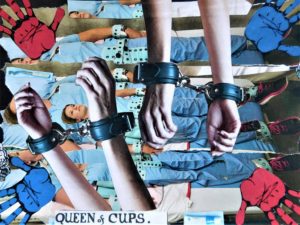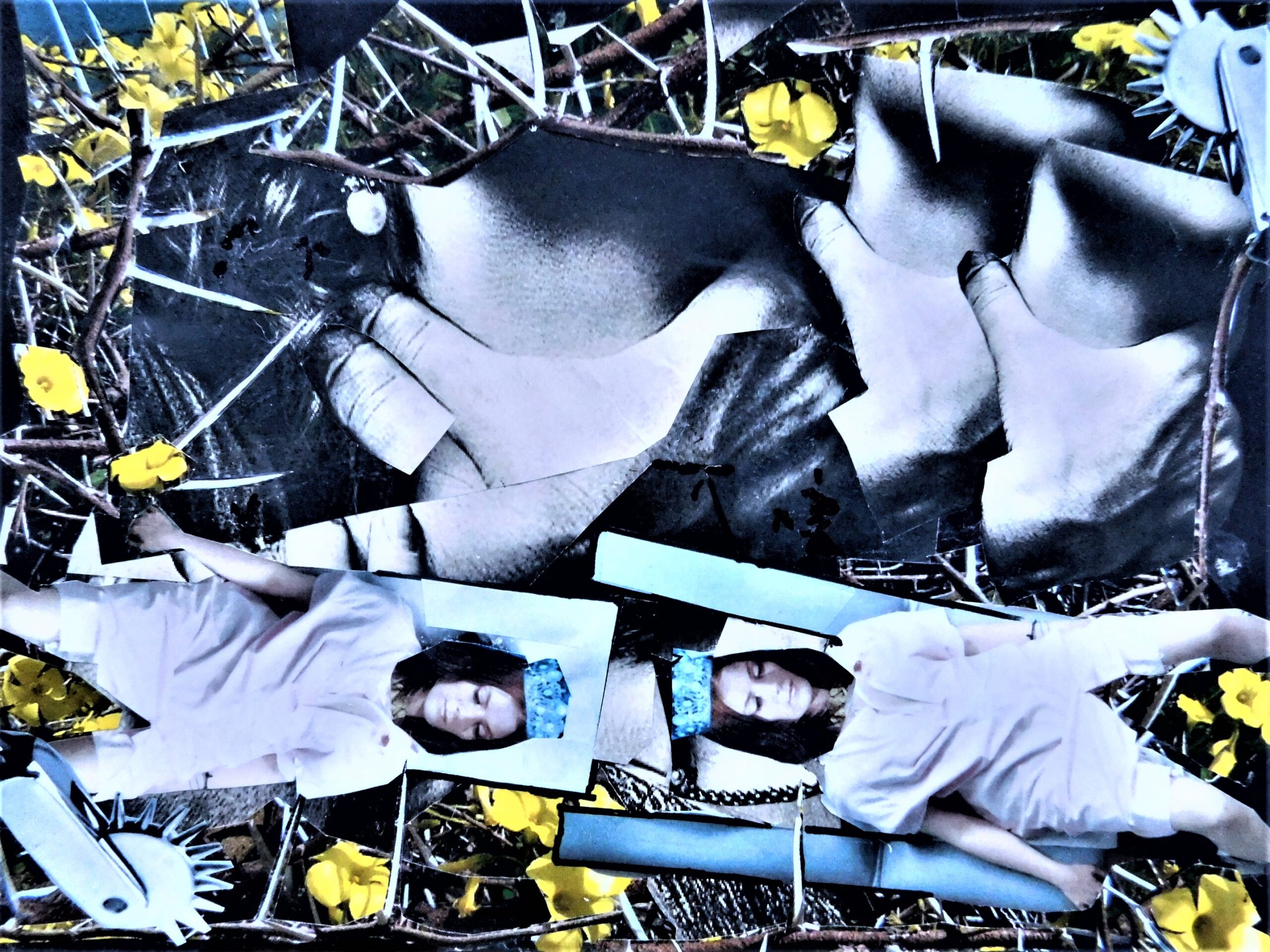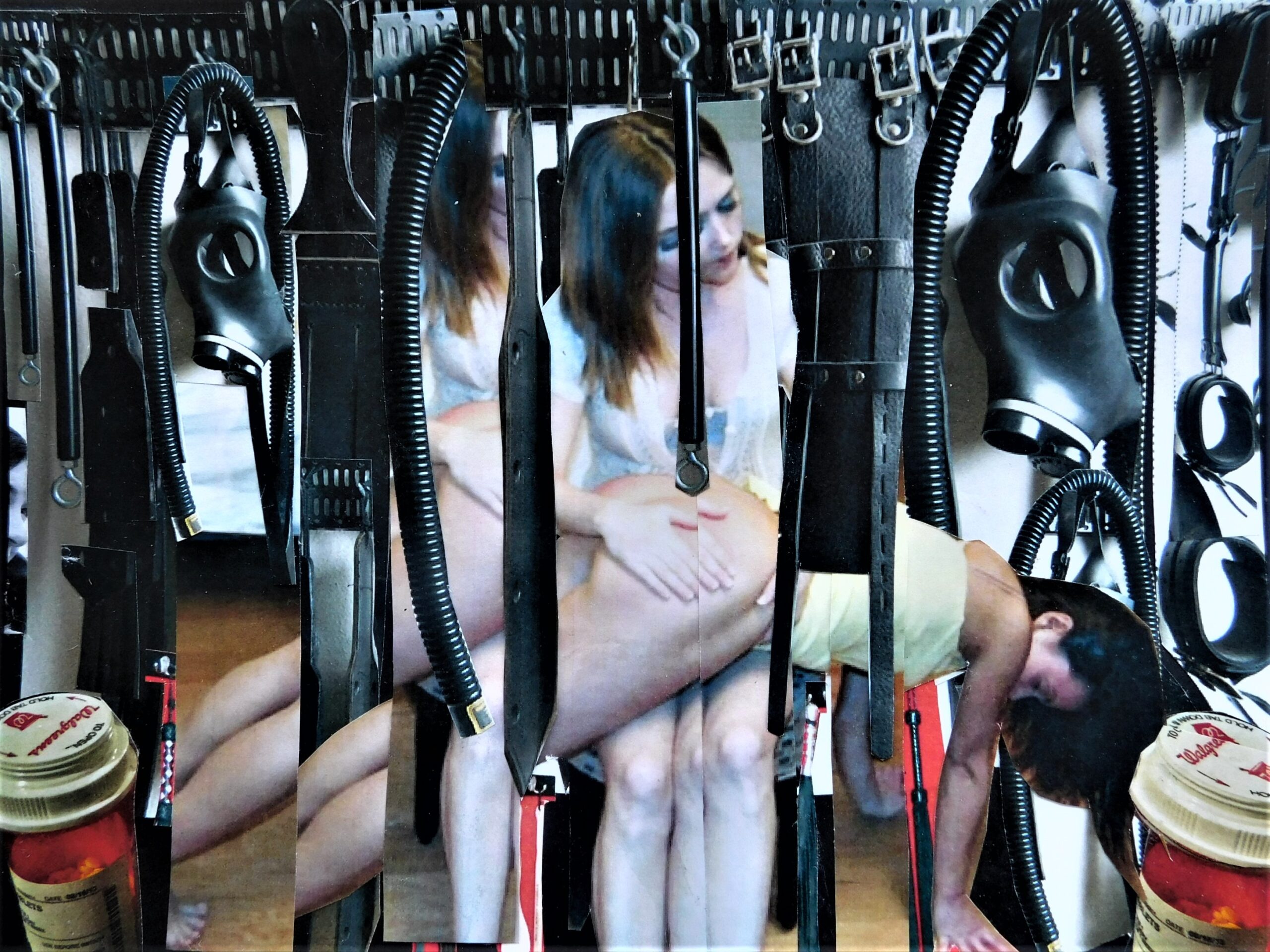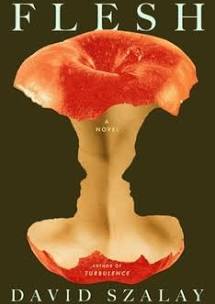
This piece was first published on January 8, 2018.
I pack my purse the way a fussy mother preps her kindergartner for a playdate: snack, water bottle, medication, emergency contact info. The flavored apple sauce with a twist-top from Trader Joe’s is a favorite—I always buy strawberry, sweet and pink, since carrot has the consistency of pulp. A plastic baggy stuffed with Annie’s cheddar bunnies works for salt intake on a normal outing, but for a grown-up playdate, I bring the heavy hitters: sodium chloride and electrolyte tablets, my daily doses of Midodrine, Metoprolol, MetaNx, Deplin, Cysta-Q, Zoloft. If I’m anxious I pack the bottles, and they tumble and clack against each other like baby rattles.
I bring literal heavy hitters, too. My first purchases were cautious beginner’s pieces from The Pleasure Chest, though I deliberately avoided the Fifty Shades of Grey line. Travel-sized suede flogger, a leather slapper more bark than bite. I bought these the weekend a friend spanked me for the first time, and slowly added to the collection: riding crop, silicone paddle, Wartenberg pinwheel. The wheel is stainless steel, a sunburst of spikes attached to the handle; the sensation ranges from a light tickle to sharp pressure, could probably break skin. These, like a lot of BDSM toys—speculums, TENS units—were originally used medically. The bag I take to parties is a decent size, big enough for implements and essentials, but my crop is too long; the morning after we played together, a friend put it in his backpack with a sweatshirt draped casually over the handle when we caught a Lyft back to my place. Someone tried to steer me away from canes, brows arched as I test-swung one against my palm because they’re “too intense” when you’re new, but everyone’s body is different and my body likes the sting of them. I purchased a rattan one from a local vendor, the handle braided with red rope, no longer than my forearm but still too big for my messenger bag. Its pointed tip stood poised to tumble free and eviscerate any vampires it might hit on its way to the ground. I slipped it into the sleeve of my jacket and bundled the leather under my arm for the walk to my friend’s car, even though it was chilly enough that I’d rather wear it, and we joked about the cane’s other potential uses: walking stick, magic wand. Giant knitting needle, missing its partner.
My medical accommodation card is just a flimsy print-out from Dysautonomia International, dogeared and washed out by the dregs of an ink cartridge, stuffed in an easily accessible pocket of my travel wallet. It doesn’t cover all the bases of my disability, but it’s been enough for more than one set of puzzled ER nurses:
This person has Neurocardiogenic Syncope (NCS). NCS can lead to irregular heart rates and blood pressure. This person may urgently require a place to lie or sit down in order to avoid fainting and/or severe chest pains. Please allow this person to sit or lie down when needed. Thank you.
The first time I blacked out, I was sixteen years old and suffering through a weekly internship on Capitol Hill. It was standing room only at my assigned hearing, with latched windows and tightly packed bodies that thickened stagnant air, sweat darkening my crisp button-up. Not long after I arrived, I felt a pinch in my gut and pushed the doors open to find a restroom. During high school, my period gushed with cramps that squeezed my insides like a vise; some mornings upon waking I spasmed with pain for thirty minutes to an hour before I dragged myself into the tub, where my spine curved against porcelain and the shower spray pummeled my twitching muscles. We were only allotted five absences a semester before our grades were docked ten percent, and missing more than three days of our Hill internship meant failing.
It was too early to leave for the day, but I found myself calculating whether I could handle walking the few blocks to my bus stop. I made it to the door and then backtracked to the Senate security guards, asked if there were health services in the building. They gave me directions, and I managed ten determined steps before that gut-pinch twisted sharply, static buzzing in my ears as my vision blotted out the fluorescent lights, the marble floor. I came to on the ground, sour vomit in my curls, with staffers and security huddled around me as I was covered in a blanket, lifted onto a stretcher.
It was my first ambulance ride, and not my last. I stripped out of my nylons and pencil skirt in a bathroom at George Washington University Hospital, and the nurse fussed at me when I emerged dazed and barefoot in my paper gown. I needed socks; why didn’t anyone give me hospital socks—a gunshot victim came through a few minutes before. Head wound. There was blood on the tile. I imagined brain matter squishing between my toes.
She asked the usual questions, once she positioned my hastily covered feet into stirrups, smearing cold blue gel over my tummy. Are you pregnant? Are you sure there’s no possibility that you’re pregnant? When was your last period? When’s the last time you ate? She asked if I’d ever had a transvaginal ultrasound just before she pushed inward and I bit my tongue hard against the intrusion, tasting copper. It felt like she tore something. There was blood on the probe when she pulled out, and I said: there’s my last period.
I received an official-looking get-well-soon letter from Ted Kennedy, probably written by another intern, but it found a place on my bookshelf nonetheless.
None of my doctors acknowledged that my pain was unusual. They always asked if I was eating, if I was getting enough sleep, if I could be pregnant. The fainting spells were anxiety, the vaginal issues were whatever. A decade passed before I understood that black-outs and bone-deep fatigue, tremors and muscle weakness, are not typical of panic attacks; searing pain with tampon or finger insertion is also not normal. My family doctor furrowed her brow as I sobbed my way through a routine pap, even when she switched to her smallest speculum. Her solution was to only subject me to a pelvic exam every other year, so long as I was not sexually active. I didn’t tell her I had sex with women, because I was always told that the kind of sex I have doesn’t count as sex at all.
One girl explained, with an edge of frustration, that it’s supposed to hurt if you haven’t been fully penetrated before. Maybe my hymen was still intact and sex would finally feel good once it was not, but my body rejects any kind of intrusion, even the kind that I want. I lay out a welcome mat beneath a tangle of thorns. I always wait to see if I can endure the discomfort of being fingered before pressing a quiet apology to the curve of my partner’s shoulder, telling them it hurts. I know they just want to make me feel good. Most stop, move on; a lot go back to using their tongue. Sometimes even that slick softness makes my muscles tighten, trembling in a way that I hope reads as pleasure. I wondered for a long time if my pain tolerance was low—if everyone else’s body was better at handling “normal” amounts of pain than mine.
I saw my therapist for a year before I brought up the topic of sex, though we talked often about my illness. We dug into BDSM and porn and the things I feel guilty enjoying as a queer feminist: women with mottled-dark bruises and “slut” scrawled in lipstick on their inner thighs, big rough hands closed around their throats. At the time, I only got off when reading erotica. She asked if I ever pictured myself in the stories I read, if I could imagine being in a character’s place. I surprised myself when I told her no, never. She asked me to try.
My gyno in Los Angeles is Conan’s resident sex expert and friends with Amber Rose. She changes from strappy leopard print sandals into Ugg slippers once she’s settled at her desk, and she’s the first person who thinks my autonomic nervous system dysfunction and vaginal pain are linked, that there’s a shared root cause. I feel something within me release. She gives me marijuana suppository samples, little cocoa butter bullets I need to refrigerate in the summer heat, and a spray bottle of oil that will relax my clenched muscles and make me feel good. I remember reading about someone who drank this and was stoned for days. When I try it for the first time, I lick my middle finger after swiping the oil inside my folds, managing to get knuckle deep, and warmth blooms low in my belly, a slow thaw.
I get a referral for a physical therapist, and I imagine pelvic therapy will be a weekly hour of kegels with interspersed reps of awkward thrusting. (I’m not entirely wrong.) Gina, the therapist, looks like the Queen of Cups in my Klimt tarot deck, which is based on his 1902 oil painting of Emilie Flöge. The Queen of Cups is gentle, intuitive, feminine; cups in tarot are a clear visual metaphor for the vagina. Gina is short and ruddy-cheeked, with a halo of frizzy curls and a reassuring smile. She uses an infrared heat lamp on my vulva, which isn’t unpleasant the way I expect all of this will be. It buzzes with a traffic light glow, a pulse that barely registers against my skin.
First, I learn how to breathe. Chest breaths and belly breaths, the opposite of the calming meditative breaths I’m used to: these are meant to excite, to stimulate. My fingers start tingling from increased oxygen, better blood flow, but it feels similar to the tingling that comes with a blood pressure drop. The edges of my vision flicker, and Gina asks me to name colors in the room when I sit up so I don’t pass out: brown envelope, red painting, blue yoga mat.
She also tells me, kindly, that I move my body and react to her instruction like I need to be in control, when what we are working toward is release. I never cry during the physical exercises, the sharp stretch and the searing-cold burn of ice on my vulva, but I do cry when she asks me how I feel.
I’m supposed to bring any dildos or dilators I own to PT so we can work with them. Most of my sex toys are external, vibrators designed for clitoral stimulation, but I have one glass dildo shaped like an anime magical girl wand, topped with a crystal-pink heart. I carry this in my tote bag, and consider the convenience of having a blunt object on hand if a driver ever gets weird on the trips to and from Santa Monica. Gina scribbles a note on the size once I show it to her: “medium plus.”
When she inserts a gloved finger and I wince, she asks what, specifically, the pain feels like: if it’s sharp or dull, spread out or localized. If it feels like ground glass, for example, and that’s the first analogy that encapsulates my experienced since I first sobbed my way through tampon insertion at age twelve. It’s always been ground glass, scraping against my insides. I imagine a light held to the place where I open would illuminate a mess of torn flesh, throbbing red-wet.
Each week, Gina asks if I’ve had sex with myself or a partner since I last saw her. Once, when I’m still seeing her twice a week, I plan on attending a play party the day before our next session is scheduled. I steel myself to discuss it, so I’m not fielding questions about the bruises on my ass and thighs. I’m afraid that because we’re here to ease my sexual pain, Gina will chastise me for putting myself through other kinds of pain, or that spanking is somehow detrimental to the work we’re doing together. She’s unfazed when I tell her that I enjoy impact play sometimes, and want to know if it will affect our sessions. She asks if I engage in penetration with my partners, and when I tell her no, she says that I could try using my dilator after a spanking to see if I yield more easily, if there’s a difference in how much I open.
*
I don’t know if I’ll like being spanked before it happens. A couple of months into attending kink events I confessed to an acquaintance, as we watched mutual friends play, that I’d never been hit before. He raised his eyebrows, arms folded casually across his chest, and asked: Really? Why not? I didn’t have a good answer. He pointed out how well our friend took it, her unflinching good form: the arch of her back, the responsive “yes, sir”s, her ability to count on command even when her voice quivered with the heaviest blow.
I like that we call it play, or a scene. It reminds me that the pain is real but the lack of control isn’t. I especially like the sound, the smack of palm to skin and the bright flush that unfurls beneath the surface with a thrumming ache. The dungeon I frequent has themed rooms: jail cell, classroom, medical room, red room. They’re modestly sized and equipped with furniture, props, cleaning supplies, and always smell like leather and sweat and rubbing alcohol. At my first party, I watched a girl through the bars of the jail cell, wrists shackled over her head and chains cranked high enough that she was forced to stand on her tiptoes. She trembled with the effort, ribs jutting above the hollow of her belly; she was slender, not much substance to her, but there was strength in the way she held herself, the flex of her calf muscles and grit of her teeth. Clothespins snaked a crooked line across her naked breasts, and her partner flicked them off one by one with a flogger, her stuttering gasps punctuating the corded leather tails as they cracked the air.
Later, I spotted the woman and her partner sprawled on one of the broken-in leather couches in the main room of the dungeon. Her lashes were wet, cheeks pink, but she was wrapped in a blanket and his arms and they both looked like languid jungle cats, sated and content. It fascinated me that aftercare is normal and expected, that you can ask for whatever you need after enduring so much pain—no apologies, no need to worry that you’re inconveniencing someone. Often you’ll watch someone go into the dungeon in latex and heels and emerge in a pastel robe and fuzzy slippers, ready to be pampered for a while. When you’re sick, this sort of tender, indulgent care is difficult to come by without tremendous feelings of helplessness and guilt.
A cornerstone of BDSM is negotiation and consent. My partners are generally people I’m friends with first, who I trust to pay attention to the signals of my body when I tell them what to watch for. There’s vulnerability in disclosing the details of my illness to others, and it’s something I have to give even to people I’m not close with, in case of emergency. Here is what to do with my body, if I’m rendered incapable of carrying it: here is the potential risk of going on a drive, a hike, a date with me. I’m surprised every time I tell this to someone who then wants to engage with it, to bring it pleasure I’m so tired of carrying myself that I can’t imagine anyone else wanting to carry me.
*
The summer I was diagnosed with dysautonomia I ping-ponged in and out of emergency rooms and doctors’ offices, and my cardiologist ordered a tilt table test to confirm his suspicion that I had postural orthostatic tachycardia syndrome. It was an outpatient procedure, scheduled for 8 a.m., which meant I had to be at the hospital at 6 a.m. No food, no water, no meds; a positive test required my heart rate to spike above a certain number, a blood pressure drop, and passing out. I hadn’t experienced a full black-out episode in years, because I learned how to manage my pre-syncopal symptoms to avoid one: hydrate, eat salty food, lie flat to stabilize heart rate. Even pre-syncopal episodes take a heavy toll, like my body’s been tossed onto jagged rocks with the swell of an incoming tide, over and over and over. I spend the days afterward hypersensitive to fluorescent light and ambient noise, fingers trembling around a fork or glass of water. Straws become invaluable when I can’t lift a glass to my lips. I feel like I’ve been battered out of my corporeal form and have to knit my muscle and skin and bones back together. Full syncopal episodes are worse.
At the hospital, I was strapped tight to a flat table with buckles across my chest, my stomach, my thighs, an IV threaded into the back of my hand. The nurse was amiable and a doctor and tech sat at the computers, eyes on my vitals and the impulses of my heart. The time range for the test was fifteen to sixty minutes, depending on how long it took me to go dark. The thing I worked to avoid at every waking moment was that morning’s goal.
They raised the table to a thirty degree angle, and the nurse took note of my rapid increase in heart rate. This happens every time I sit up, pulse leaping when I get out of bed as if I’m plunged into danger the minute I wake. Perpetual fight or flight. I felt okay, though the lights were too bright, and I was overtired from not sleeping the night before. I fantasized for a moment about the hospital breakfast I was promised when the test was over.
After a few minutes without change, they tilted the table to sixty degrees. I was suspended above the room, dream-like, without the power to fall back into myself. The doctor and tech chatted, occasionally checking in to ask how I was doing. The answer to that question was “okay,” until it suddenly wasn’t; my skin prickled with cold sweat, fingertips tingling into numbness. I didn’t realize I was hyperventilating, tears streaking my cheeks, until the nurse instructed me to breathe. I choked out that I was going to throw up, stars spotting the edges of my vision. They asked if this happened every time, and the answer was yes. I hiccuped please, please, please—and they finally lowered me when they got the readings they needed. Not a moment before, not because I begged for it. Out of body, then back in.
*
I’m startled sometimes by the brightness of BDSM, the pain I opt into. On its surface it’s awash in a dim red glow, all heavy chains and rubber ball gags, mistresses wrapped in PVC and breath-stealing corsets. That manufactured darkness is there, if you want it—and sometimes I do. But I find that I laugh during play—not a misnomer—more often than I cry, giggling when a flogger tail tickles my shoulder blade, snorting after I gasp at an unanticipated smack. The moments of humor and weirdness are normal, just as they are in sex; and just as with sex, mainstream and pornographic representations of BDSM always polish those messy, human edges away.
I love sifting through rabbit fur floggers in fuschia, sea foam, royal purple, handmade paddles in rosewood and teak and poplar just as much as supple black leather or silicone. My heart relishes the catharsis of the dark, but sometimes all my body needs is that bright edge to crack open the joy in pain.
When my friends cuffed me for the first time—my first time being restrained since my tilt table—they explained each step: how the cuffs should feel, both wrist and ankle, adjusting them for me when they were a little too tight. They threaded rope through the rings to bind me to the spanking horse, loose enough so I had some range of motion and could extricate myself if I tried hard enough, but tight enough to offer the feeling of restraint.
They warmed me up with bare hands and a moose-hide flogger with heavy, butter-soft falls. I arched into the surprisingly gentle strokes, the comforting weight like a flurry of rain on my upper back. My friends conferred, amused, and each took a cheek with a hard, open-handed smack. I bit back a startled laugh, teased him that she definitely hit harder. They noted how my skin was already warm, mulled over the shape of the bruises they hoped to leave. His cane stung, all sharp, hot stripes that left angry raised welts; they switched off and she unlooped her belt to strike me with it. Leather soothed like melting ice after the fire of wood, and I sighed with my whole body in a way that made them chuckle because I sounded refreshed, thirst quenched.
I lowered my forehead to the sweat-slick upholstery of the bench, clasped my hands in front of it. He threaded fingers through my hair where it curls at the nape, scratched short nails against my scalp, and my lashes fluttered against my cheek when he told me I was doing good. She watched my breath between hits, made sure I was still there. In the moments after, when we discussed the scene, I was reminded of my first appointments with Gina and her gentle, strange observation: “Your body’s not used to breathing.” Breath comes easy in the dungeon, somehow.
I’d played with him before, and she is his partner, but the three of us together was new. We were learning each other, and sometimes I envy people who know how to fold themselves inside another person with permission, with care. I don’t know anyone’s body like that, because I’ve spent the last two years finally learning to inhabit my own. He and I shared a bed twice—once after a bottle of wine each and kisses on the sofa, once after he caned me and rolled a pinwheel over my thighs, steel spikes tearing through my stockings, but we didn’t have sex. I encouraged him to hit harder, until I felt the burn of mascara bleeding off my lashes, until I was floating, drunk on endorphins. He asked if I like having my back stroked, and I shivered and told him yes. We took turns being little spoon.
I ached when I got in and out of bed to pull on pajamas and brush my teeth, my skin already darkening in the moments after I was struck. Pain brings the world into too-sharp focus. This is the place where I learn to yield until each stroke bleeds into the next, a blur of sensation that diffuses light and sound and color into softness. White noise.
I’m held. I hold steady, and I unravel.
***
Rumpus original art by David Dodd Lee.







